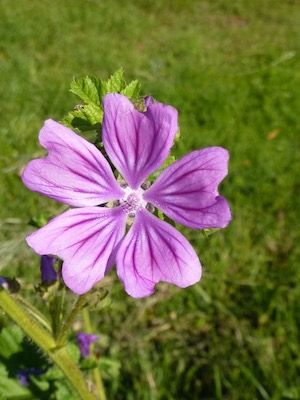MALLOW
I- Nomenclature
Latin name: Malva sylvestris
Family : Malvaceae
Common names: Malva ambigua, Malva erecta, Malva mauritiana1, Cheeses, High Mallow2
Etymology
From the Latin “malva”: soft (emollient property of mauve)
From the Latin “sylvestris”: forest
II- Legends and traditions
Pythagoras and his pupils considered it "suitable for moderating passions and keeping the stomach and mind at liberty".
III- Botanical description
Description: Biennial or perennial herbaceous plant of 30 to 1.20 m with straight, branchy, robust and hairy stems
The leaves are alternate, dentate, polymorphic, soft and tomentose.
The flowers are purplish pink with 5 purple-veined petals, grouped in the leaf axils.
The fruits are circular achenes called cheese.
Habitat: along the roads, in the fields, wasteland in Europe and North Africa.
Flowering: spring and summer
Harvest: the flowers are harvested all summer. The leaves are harvested before flowering.
Pars used
IV- Active ingredients
|
Flowers |
|
• Mucilages (5 to 12%) • Tannins • Polysaccharides • Anthocyanosides • Flavonoids • Vitamins A-B-C |
V- Therapeutic use
Properties
|
Flower |
|
• Emollient • Laxative • Pectoral • Skin softening |
Indications
Colds, bronchitis, tonsillitis, flu. It decongests and heals inflammation.
Asthma, stomach disorders, inflammation of the urinary tract.
Constipation
Dosage
Infusion: Put 10 gr of flowers for a liter of water, drink 3 cups a day.
Poultice: Boil the leaves for 2 minutes, strain and crush them in a cloth, apply in case of boils or abscesses.
Gargle: whole plant
VI- Precaution of use
Contraindication: none known
Interactions: avoid taking alcohol, tannins or iron salts at the same time as mallo
Warning: It is advisable to leave a period of one hour between taking a herbal tea and any other treatment.
1 http://www.naturalmedicinalherbs.net/herbs/m/malva-sylvestris=mallow.php
2 https://en.wikipedia.org/wiki/Malva_sylvestris



